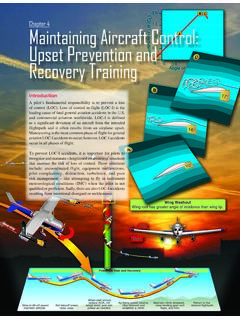Transcription of Chapter 7: Diptheria; Epidemiology and Prevention of ...
1 diphtheria diphtheria is an acute, toxin-mediated disease caused by the bacterium Corynebacterium diphtheriae. The name of the disease is derived from the Greek diphthera, meaning leather hide. The disease was described in the 5th century BCE by Hippocrates, and epidemics were described in the 6th century AD by Aetius. The bacterium was first observed in diphtheritic membranes by Klebs in 1883 and cultivated by L ffler in 1884. Antitoxin was invented in the late 19th century, and toxoid was developed in the 1920s. Corynebacterium diphtheriae C. diphtheriae is an aerobic gram-positive bacillus. Toxin 7. production (toxigenicity) occurs only when the bacillus is diphtheria itself infected (lysogenized) by a specific virus (bacterio- Greek diphthera phage) carrying the genetic information for the toxin (tox (leather hide).)
2 Gene). Only toxigenic strains can cause severe disease. Recognized by Hippocrates in 5th century BCE. Culture of the organism requires selective media containing tellurite. If isolated, the organism must be distinguished Epidemics described in in the laboratory from other Corynebacterium species that 6th century normally inhabit the nasopharynx and skin ( , diphthe- C. diphtheriae described by roids). Klebs in 1883. C. diphtheriae has four biotypes gravis, intermedius, mitis Toxoid developed in 1920s and belfanti. All strains may produce toxin and can cause severe disease. All isolates of C. diphtheriae should be tested Corynebacterium diphtheria for toxigenicity.
3 Aerobic gram-positive bacillus Pathogenesis Toxin production occurs Susceptible persons may acquire toxigenic diphtheria bacilli only when C. diphtheriae in the nasopharynx. The organism produces a toxin that infected by virus (phage). inhibits cellular protein synthesis and is responsible for local carrying tox gene tissue destruction and pseudomembrane formation. The If isolated, must be toxin produced at the site of the membrane is absorbed distinguished from normal into the bloodstream and then distributed to the tissues of diphtheroid the body. The toxin is responsible for the major complica- tions of myocarditis and neuritis and can also cause low platelet counts (thrombocytopenia) and protein in the urine (proteinuria).
4 Non-toxin producing strains may cause mild to moderate pharyngitis but are not associated with formation of a pseu- domembrane. While rare severe cases have been reported, these may actually have been caused by toxigenic strains that were not detected because of inadequate culture sampling. Centers for Disease Control and Prevention Epidemiology and Prevention of Vaccine-Preventable Diseases, 13th Edition April, 2015. 107. diphtheria Clinical Features The incubation period of diphtheria is 2 5 days (range, diphtheria Clinical Features 1 10 days). Incubation period 2-5 days (range, 1-10 days) Disease can involve almost any mucous membrane.
5 For clinical purposes, it is convenient to classify diphtheria into May involve any mucous a number of manifestations, depending on the anatomic site membrane of disease. Classified based on site of disease Anterior Nasal diphtheria anterior nasal The onset of anterior nasal diphtheria is indistinguishable 7 pharyngeal and tonsillar from that of the common cold and is usually character- ized by a mucopurulent nasal discharge (containing both laryngeal mucus and pus) which may become blood-tinged. A white cutaneous membrane usually forms on the nasal septum. The disease ocular is usually fairly mild because of apparent poor systemic absorption of toxin in this location, and it can be terminated genital rapidly by diphtheria antitoxin and antibiotic therapy.
6 Pharyngeal and Tonsillar Pharyngeal and Tonsillar diphtheria diphtheria The most common sites of diphtheria infection are the Insidious onset of pharyngitis pharynx and the tonsils. Infection at these sites is usually associated with substantial systemic absorption of toxin. Within 2-3 days membrane The onset of pharyngitis is insidious. Early symptoms forms include malaise, sore throat, anorexia, and low-grade fever Membrane may cause (<101 F). Within 2 3 days, a bluish-white membrane forms respiratory obstruction and extends, varying in size from covering a small patch on Fever usually not high but the tonsils to covering most of the soft palate.
7 Often by patient appears toxic the time a physician is contacted, the membrane is greyish- green, or black if bleeding has occurred. There is a minimal amount of mucosal erythema surrounding the membrane. The pseudomembrane is firmly adherent to the tissue, and forcible attempts to remove it cause bleeding. Extensive pseudomembrane formation may result in respiratory obstruction. While some patients may recover at this point without treatment, others may develop severe disease. Fever is usually not high, even though the patient may appear quite toxic. Patients with severe disease may develop marked edema of the submandibular areas and the anterior neck along with lymphadenopathy, giving a characteristic bullneck appearance.
8 If enough toxin is absorbed, the patient may develop severe prostration, striking pallor, rapid pulse, stupor, and coma, and may even die within 6 to 10. days. Laryngeal diphtheria Laryngeal diphtheria can be either an extension of the pharyngeal form or can involve only this site. Symptoms include fever, hoarseness, and a barking cough. The membrane can lead to airway obstruction, coma, and death. 108. diphtheria Cutaneous (Skin) diphtheria In the United States, cutaneous diphtheria has been most often associated with homeless persons. Skin infections are quite common in the tropics and are probably responsible for the high levels of natural immunity found in these populations.
9 Skin infections may be manifested by a scaling rash or by ulcers with clearly demarcated edges and membrane, but any chronic skin lesion may harbor C. diphtheriae along with other organisms. Generally, the organisms isolated from cases in the United States were nontoxigenic. The severity of the skin disease with toxigenic strains appears to be less than from other sites. Cutaneous 7. diphtheria is no longer reported to the National Notifiable Diseases Surveillance System in the United States. Rarely, other sites of involvement include the mucous membranes of the conjunctiva and vulvovaginal area, as well as the external auditory canal.
10 Complications Most complications of diphtheria , including death, are attributable to effects of the toxin. The severity of the disease diphtheria Complications and complications are generally related to the extent of Most attributable to toxin local disease. The toxin, when absorbed, affects organs and Severity generally related to tissues distant from the site of invasion. The most frequent extent of local disease complications of diphtheria are myocarditis and neuritis. Most frequent complications Myocarditis may present as abnormal cardiac rhythms and are myocarditis and neuritis can occur early in the course of the illness or weeks later, Death occurs in 5%-10%.















